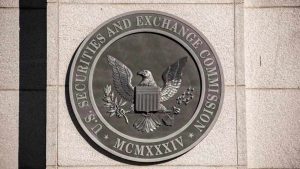Hash Ribbons React to Low Volatility Trends

For the second time in 2023, the blue “Buy” signal on the Hash Ribbons indicator flashed on. If the situation from January is repeated, Bitcoin will likely surge 27% and reach its target of $37,300.
The possibility of a big move in the cryptocurrency market is further enhanced by the very low volatility of the Bitcoin price. The BBWP indicator shows minimal volatility of BTC, which suggests that a big move in the cryptocurrency market is coming. Interestingly, similar conditions of reduced volatility appeared with the previous bullish signal from Hash Ribbons.
Hash Ribbons Flashes Blue
The Hash Ribbons indicator is based on the hash rate, the basic performance parameter of the Bitcoin network. The hash rate represents the amount of computing power that all BTC miners are currently generating.
Hash Ribbons is based on the relation between the hash rate indicator’s two moving averages (SMAs): the 30-day SMA and the 60-day SMA. In addition, the indicator relates to the 10-day and 20-day moving averages of the BTC price.
Previously, the indicator generated a blue signal on January 14, 2023. This weekend, on August 12, to be exact, Hash Ribbons turned blue for the second time this year.
Sponsored
Sponsored
The basic interpretation of the blue “Buy” signal is that the bottom of the Bitcoin price generated immediately before the signal appears is a macro bottom of the BTC market. Simply put, buying Bitcoin at the time of the signal generates potentially large long-term profits with little downside risk.
The previous time, the price of BTC increased by about 27% after the signal appeared: from the level of $20,000 to the peak at $25,300. If the identical scenario were to repeat now, BTC could reach the $37,300 level in the coming weeks.
Bitcoin Low Volatility Suggests an Upcoming Move
The possibility of a large move in the cryptocurrency market is increased by the dramatically low volatility of the BTC price. This is indicated by the Bollinger Band Width Percentile (BBWP). This metric is based on Bollinger Bands (blue areas), which determine the asset’s trading channel width.
BBWP calculates the percentage of past bars where the width of the Bollinger Bands was less than the current one. In other words, the smaller this percentage (blue), the lower the volatility of the asset. Conversely, the higher the values (red), the higher the volatility relative to the comparable period. Usually, short periods of low volatility are followed by an expansion phase and a large move of the analyzed asset.
The chart below shows that BBWP is currently reaching lows below 5% on the Bitcoin daily chart. What’s more, the metric even generated 3 blue bars, which indicate minimal volatility.
It turns out that an analogous situation took place just before the appearance of the previous “Buy” signal from Hash Ribbons. Then the volatility of the BTC price was so low that BBWP recorded as many as 8 blue bars in the period immediately preceding the blue dot.
Support and Resistance According to Hash Ribbons
However, it is worth noting that the BBWP volatility indicator alone does not give any clue about the direction of expansion. This means that based on it, both a large move up (green arrow) and down (red arrow) are equally likely.
Despite this, the chances of an upward move are enhanced by the blue signal from Hash Ribbons. Then the target of $37,300 seems to be in play. However, should BBWP expansion lead to a downward move, the $25,000 support (green) would be the first target.
If the basic interpretation of the Hash Ribbons “Buy” signal remains correct, then the BTC price should no longer drop below the $25,000 low. However, previous historical analysis by BeInCrypto shows that the indicator has already been wrong 3 times in the last few years.
For BeInCrypto’s latest crypto market analysis, click here.
Disclaimer
In line with the Trust Project guidelines, this price analysis article is for informational purposes only and should not be considered financial or investment advice. BeInCrypto is committed to accurate, unbiased reporting, but market conditions are subject to change without notice. Always conduct your own research and consult with a professional before making any financial decisions.













